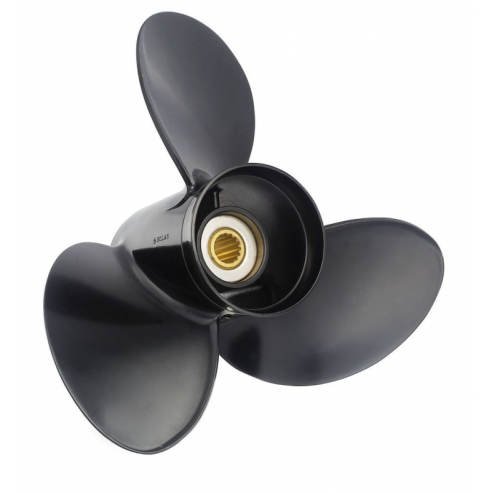- Material
- Aluminium
- Number of blades
- 3
- Step
- 13R
- Engine brand
- Suzuki
- Motor power
- 50 Hp
- Diameter
- 11.1
- Rotation
- Destrorsa
- Engine architecture
- 2 Tempi
- Motor positioning
- Fuoribordo
- -25%
Prodotti alternativi
Product Details
About Solas
It tends to be the case that the propellers you find by default in your boat are just enough to move your boat on weekends. If you use your boat for work, the propeller provided by the parent company will probably not perform optimally and you will find yourself having to change it.
But how do you choose the right propeller?
The propeller is notoriously one of the most expensive parts of a boat, but trying to make the best possible choice for your boat will then allow you to cut costs by saving on fuel and travel time.
There are a number of conditions to always consider when choosing your propeller among which are certainly the cost, maintenance required, braking power and reverse and forward power, as there are some specific terminologies and pointers to learn to know whether or not we are making the correct purchase.
For example, one of the terminologies you are likely to find when buying a new propeller is theevolutionary effect
The number of blades seems the most obvious but not the least important, also because it presents discrepancies with respect to operation: if a boat has a two-bladed propeller, it is logically assumed that both are working at full speed, whereas a
Last but not least, the size of the propeller which is given by its diameter however expressed in inches and plays a really crucial role in the choice since the larger the propeller the more energy it can produce. The world of propellers however offers various types of products to satisfy both the simplest and the most professional demand.
For example, fixed blade propellers are the most common and you will normally find them on your boat as soon as it leaves the factory. They are quite reliable and inexpensive propellers and are fine in the vast majority of cases. Folding-bladed ones, on the other hand, offer the least resistance to water because they have blades attached to the hub by means of a pin that allows them to bend aft and decrease, as we said, resistance. They have great efficiency in forward motion, because once opened they are comparable to those with fixed blades while it has some difficulty in reverse.
One of the best possible choices is definitely the swivel-bladed propeller because these, once they reach cruising speed, arrange themselves parallel to the axis so as to offer minimum friction, as well as changing arrangement automatically with respect to the gear engaged.
As you may have guessed, the fixed-blade propeller is considered the standard for sailboats, but the other solutions outlined will give a plus to both motor and sail speed by decreasing drag.
Whether they are made of steel or aluminum, with fixed, steerable or variable blades Solas can provide you with a wide range of high-quality products suitable for a variety of types of both work and leisure boats.



